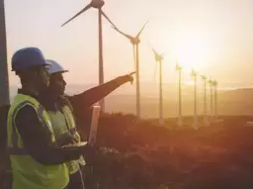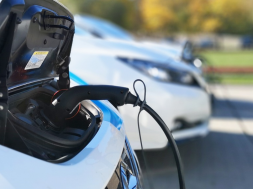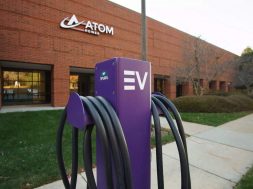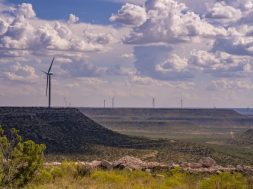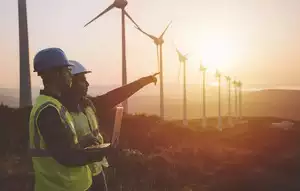
NASHVILLE, Tenn. : Under a new board majority picked by President Joe Biden, the nation’s largest public utility on Thursday reacted to a drumbeat of concerns about not meeting the Biden administration’s own power sector climate change goals by announcing a new study of clean energy adoption opportunities throughout the region’s economy.
The Tennessee Valley Authority touted plans for the study with the University of Tennessee’s Baker Center for Public Policy during its board meeting in Florence, Alabama. The study will look at the electric power supply, in addition to other areas of the economy, for ways to reduce carbon pollution that spurs climate change. TVA expects the review to last 18 months.
“Simply put, this initiative will accelerate a clean energy economy and support the economic competitiveness of the region, and it will deeply inform TVA about what challenge actually sits in front of us,” TVA President and CEO Jeff Lyash told board members.
Environmental and renewable energy advocates are closely watching the board’s switch to a Biden-selected majority. The transition follows the federal utility’s decision to stick with a fossil fuel — gas — to replace some of the generation from the aging coal-burning Cumberland Fossil Plant in Tennessee, which is slated to shut down. Those advocates highly criticized the choice, as did the U.S. Environmental Protection Agency, which ultimately declined to challenge the plan all the way to a White House council.
The utility has replaced coal units with gas previously, and it’s considering that option again at another aging coal plant in Tennessee. Currently, TVA’s generation capacity of more than 33,700 megawatts includes 39% nuclear, 19% coal, 26% natural gas and 11% hydro. Wind and solar make up 3%, while energy efficiency programs amount to 1%, according to the utility’s website.
Lyash said natural gas was the “only mature technology available today that could be in operation at Cumberland to provide firm, dispatchable power” to replace the generation of the first unit at the plant before it shuts down in 2026. TVA has faced criticisms that it didn’t take a broad enough look at combinations of available options.
The decision at Cumberland was only briefly discussed Thursday.
Gaby Sarri-Tobar, a campaigner at the Center for Biological Diversity’s Energy Justice program, said in an emailed statement that “TVA needs to build a just, 100% renewable system” adding that new board members have “an enormous responsibility.”
Sarri-Tobar also mentioned failures in coal and gas plants from a winter storm just before Christmas last year that forced TVA to resort to rolling blackouts. The breakdowns are the subject of multiple reviews.
Don Moul, TVA’s chief operating officer, said Thursday that about 6,800 megawatts of power generation were lost as harsh freezing conditions proved to be “beyond the capabilities of existing heat trace and insulation to protect equipment exposed to the elements.” Other utilities couldn’t help supply TVA with extra power because many were affected by the storm as well, Moul said.
Both units at Cumberland went down for the entirety of the frigid conditions due to frozen implementation lines, he said. Many of the simple cycle and combined cycle gas plants were affected, but most of those were brought back online during the cold, Moul said. Even though TVA was able to put 1,000 megawatts back online after the initial outages, TVA decided to implement rolling blackouts on a second day to keep its power system stable.
Maggie Shober, research director at the Southern Alliance for Clean Energy, noted in an emailed statement that the meeting discussion included her organization’s priorities around the Christmas Eve blackouts, energy efficiency and decarbonization. But there wasn’t “any indication of clear action steps by the Board on these priorities around accountability, transparency, economic development, and comprehensive planning for the future,” Shober added.
Biden has set a goal of a carbon-pollution-free energy sector by 2035 that TVA has said it can’t achieve without technological breakthroughs in nuclear generation and energy storage. TVA has set a goal to reduce greenhouse gas emissions by 80% by 2035, compared with 2005 levels. The utility has its own aspirational goal of net zero emissions by 2050.
Lyash said TVA plans to add 10,000 to 14,000 megawatts of new power generation by the end of the decade to meet growing demand. He also said the utility thinks it can achieve up to another 1,000 megawatts over the next year through initiatives to reduce customer demand for power.
He also noted TVA’s goal to add 10,000 megawatts of solar power to its system by 2035 and talked up efforts to support electric vehicle producers and help install charging stations.
“Electrifying the transportation sector, if we can do it effectively and efficiently, is our biggest opportunity for carbon reduction here in the valley,” Lyash said.
TVA provides power to 10 million people in parts of seven southern states.



